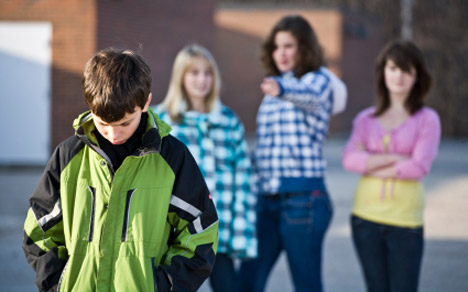
Bullying can occur in any environment and is defined as exposure repeatedly and over time to intentional negative actions on the part of one or more people. It happens, on average, every seven minutes on elementary school playgrounds. It most often occurs while others watch and it does not stop when victims are left to deal with it themselves.
Forms of Bullying:
- Physical – hitting, kicking, pushing, pinching, shoving, etc.
- Social – insulting, teasing, threatening, excluding, making fun of others, gossiping, spreading rumours, ganging up on others
Why Children Bully:
There are many reasons why children bully others. Sometimes the bully feels like s/he doesn’t fit in and so they bully others to become popular with a particular crowd. Many bullies engage in bullying behaviour because it makes them feel stronger, smarter, or better than the victim. Bullying can make the bully feel more in control. In some instances, the bully feels that this behaviour is the normal way to interact with others since they have been treated this way themselves.
Warning Signs:
A child may be a victim of bullying if s/he:
- Has unexplained torn clothing or missing belongings
- Suddenly complains of headaches, stomach-aches, or nightmares
- Has difficulty making friends
- Is often alone
- Suddenly is more withdrawn and/or aggressive toward self or others
- Does not want to go to school
- Is more easily upset than usual
- Avoids certain situations
A child may be a bully if s/he:
- Behaves aggressively with people and animals
- Is easily angered and frustrated when playing cooperative games
- Believes violence is an acceptable way to solve problems
- Hangs around with other children who appear to be bullies
What can teachers do if children are…
Victims:
- Listen to what the child says, believe what they say, try to understand their feelings
- Assure child that it is not their fault
- Involve children in prosocial activities with peers that are more supportive
- Provide specific strategies for child to use next time bullying happens
Bullies:
- Let the child know by your words and actions that bullying is not okay
- Teach children to act in ways that show respect for others and themselves
- Acknowledge what is happening and provide help
Bystanders:
- Talk to children about bullying and listen to what they think about it
- Help children plan what they will do if they see someone being bullied
- Stress the difference between telling and tattling
What Can Centres Do to Promote a Bully-Free Zone:
- Develop an anti-bullying policy which is shared with families when children are admitted to the centre
- Provide information and workshops for parents
Resources:
- Region of Peel, Bullying Hurts…Inside and Out
- www.stopbullyingnow.com
